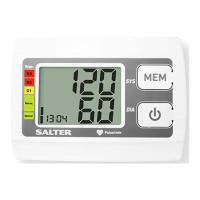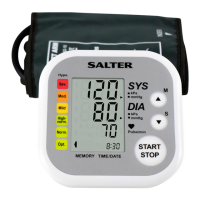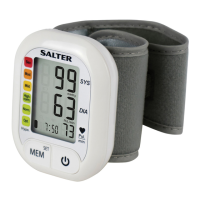Why does my Salter BPA-9200 Blood Pressure Monitor show abnormal results?
- SSeth TaylorAug 6, 2025
If the LCD display on your Salter Blood Pressure Monitor shows an abnormal result, there might be several reasons: * The cuff position was incorrect or not properly tightened. Make sure to apply the cuff correctly and try again. * Your body posture was incorrect during the test. Review the instructions regarding body posture during measurement and re-test. * You were speaking, moving your arm or body, or were angry, excited, or nervous during the test. Re-test when calm, without speaking or moving. * You have an irregular heartbeat (arrhythmia). Note that this device is not suitable for people with serious arrhythmia.



